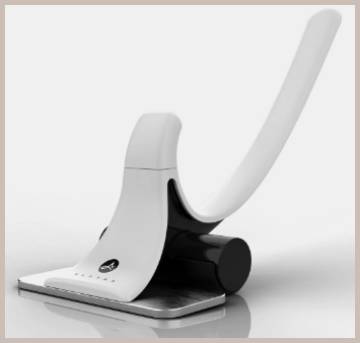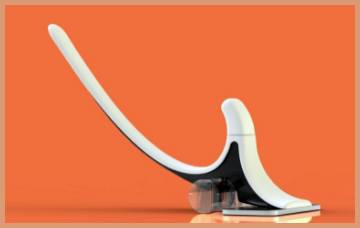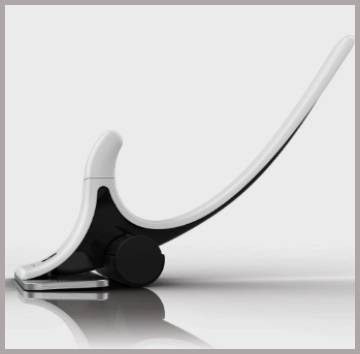If you’re looking to relieve hip and lower back pain caused by tightness in your hip flexors, the Aletha Hip Hook could be a real game-changer.
Unlike stretching exercises that only provide temporary relief, the Hip Hook directly targets the iliacus and psoas muscles, which are often the root causes of hip tension and pain.
When I first read about it, I was skeptical too, but after consistent use, the difference became clear. For anyone experiencing chronic discomfort in the hips, lower back, or even legs, the Hip Hook is an investment worth considering.
My Experience with the Aletha Hip Hook

I’ll admit, the first time I used the Aletha Hip Hook, I didn’t feel instant results. In fact, it took a few weeks of consistent use before I noticed my hips were feeling less stiff.
For years, I’d been battling on-and-off hip and lower back pain, often finding myself uncomfortable after sitting for too long or following a workout.
I’d tried various solutions, from stretching routines to foam rolling, but none seemed to give me lasting relief.
The Hip Hook, however, addresses tension directly at the iliacus muscle – a muscle that’s hard to reach through typical stretches. With a little patience, it gradually reduced the discomfort that had been bothering me for so long.
How the Aletha Hip Hook Works
The genius of the Aletha Hip Hook lies in its ability to pinpoint the iliacus muscle. This muscle is often tight in people who sit for extended periods or have weak core muscles, and it’s directly connected to the hip flexors and the psoas.
The Hip Hook applies specific pressure on these muscles, helping them release tension at the root. The design allows you to use it on the floor, lying down, or even standing, which gives flexibility depending on what’s comfortable for you.
Pros of Using the Aletha Hip Hook

Pros:
- Targets Hard-to-Reach Muscles: Unlike traditional stretching or foam rolling, the Hip Hook directly tackles the iliacus and psoas, making it more effective for lasting relief. Many of us don’t realize that tightness in these muscles can impact areas like the lower back, knees, and even down to the feet.
- Easy to Use: After a few tries, I found the Hip Hook relatively easy to handle. You can position it while lying down or standing, depending on what feels best, and it allows for a personalized level of pressure. With a bit of practice, finding the “right” spot becomes straightforward.
- Portable: One thing I appreciate is its portability. Unlike bulkier massage tools, the Hip Hook is compact and can be taken anywhere, making it a helpful companion during trips when muscle tension often flares up.
- Non-Invasive Relief: For anyone who’s wary of invasive treatments, the Hip Hook offers an alternative way to relieve muscle tightness without pills or professional therapy. It puts control back in your hands, letting you decide when and how often you want to use it.
Cons:
- Requires Consistency: If you’re looking for a quick fix, the Hip Hook might not deliver as fast as you’d hope. It took me around two weeks of daily use to start feeling real relief, so it does require consistency and patience.
- Initial Discomfort: The first few times using it can be uncomfortable – almost like a “good pain” that’s common with muscle releases. It’s worth it, but be prepared to experience some discomfort, especially if your iliacus muscle is especially tight.
- Needs Technique Practice:Finding the exact spot on your iliacus can take some practice. It’s a bit of trial and error, especially if you’re new to self-massage tools. However, once you get the hang of it, it’s easy to replicate each time.
Also Read: My Thoughts On Viconor Red Light Therap
Tips for Getting the Most Out of Your Aletha Hip Hook

To really maximize the benefits of the Hip Hook, I found a few techniques and tips helpful:
- Start Slow: Your muscles need time to adjust, so begin with gentle pressure and short sessions, gradually increasing over time.
- Experiment with Positions: The Hip Hook can be used in various positions, so try both standing and lying down to see what’s most comfortable and effective for you.
- Focus on Breathing: During each session, take deep breaths to help release muscle tension. This can make the process less uncomfortable and more effective.
- Use it After Warm-Up: I found that using the Hip Hook after some light movement or stretching helped prepare my muscles for deeper release.
- Be Consistent: For the best results, I recommend daily or at least several-times-weekly use. It’s more effective when used regularly than occasionally.
Aletha Hip Hook Vs. Other Brands
- Aletha Hip Hook Vs. QL Claw
The QL Claw is another popular tool that targets the lower back, specifically the quadratus lumborum (QL) muscle. While the QL Claw focuses on back tension, the Hip Hook is designed for iliacus and hip flexor release. If lower back pain is your main issue, the QL Claw might be better, but if hip flexor tension or hip pain is a concern, the Hip Hook’s unique design is tailored to address it directly. Both tools can complement each other, but they serve different purposes depending on the location and type of muscle tightness you’re dealing with.
- Aletha Hip Hook Vs. Theracane
The Theracane is a popular self-massage tool used to target trigger points across the body, including the back, shoulders, and neck. While it’s versatile, it doesn’t specifically target the iliacus like the Hip Hook does. For full-body relief, the Theracane is fantastic, but if you’re looking to address hip and lower back pain linked to tight hip flexors, the Hip Hook is more specialized and likely more effective for that purpose.
- Aletha Hip Hook Vs. Pso-Rite
The Pso-Rite is another tool aimed at releasing tension in the psoas and surrounding muscles. It offers more broad pressure on both sides of the body, but it can be a bit intense for those new to muscle release tools. The Hip Hook, by contrast, allows for more controlled, targeted pressure on the iliacus. If you want focused relief specifically in the hip flexors, the Hip Hook may provide a more comfortable and gradual approach.
- Aletha Hip Hook Vs. Trigger Point Grid Foam Roller
The Trigger Point Grid Foam Roller is a versatile tool that’s widely used to relieve muscle tightness across various areas, including the back, legs, and hips. While the foam roller can offer broad-based relief and is great for warm-ups or cooldowns after exercise, it doesn’t provide the targeted precision of the Aletha Hip Hook. The Hip Hook is designed specifically to address the iliacus and psoas muscles, which are difficult to target with a standard foam roller. In my experience, the foam roller works well for larger muscle groups but falls short for deep hip flexor release. For those needing general muscle relief, the foam roller is a solid choice. However, if you’re struggling with chronic hip tightness or discomfort, the Hip Hook’s specialized design offers a more focused, effective approach.
- Aletha Hip Hook Vs. Acumobility Ball
The Acumobility Ball is another popular self-massage tool, particularly for areas requiring more targeted pressure, like the lower back, glutes, and hip flexors. While it provides greater specificity than a foam roller, it lacks the ergonomic design of the Hip Hook. The Hip Hook’s handle and angled structure allow you to apply direct pressure without straining your hand or wrist, a common issue with the Acumobility Ball. The ball is versatile for many areas of the body, but the Hip Hook’s unique design makes it more comfortable for prolonged, consistent pressure on the iliacus. For hip and lower back pain stemming from iliacus tension, the Hip Hook provides a more tailored and accessible solution.
Also Read: My thoughts On MEGELIN Red Light Therapy
Frequently Asked Questions (FAQ)
Yes, many users (myself included) have found significant relief with consistent use of the Hip Hook. It’s designed to reach the iliacus muscle specifically, which is a common source of hip and lower back pain. Patience and regular use are key to seeing results.
It depends on your pain location. The Hip Hook is ideal for iliacus and hip flexor tightness, while the QL Claw targets the quadratus lumborum muscle, which is more associated with lower back issues. If hip flexor pain is your main concern, the Hip Hook is likely the better option.
The Hip Hook is placed on the iliacus muscle, located on the inner side of the hip, just below the pelvic bone. It’s recommended to follow the instructions carefully or watch tutorial videos to get precise placement for maximum effectiveness.
The Aletha Hip Hook is one of the best tools for targeting hip flexors, especially the hard-to-reach iliacus muscle. Its design is specifically crafted for this purpose, making it more effective than generic tools for those struggling with hip-related issues.
Final Thoughts
In my experience, the Aletha Hip Hook has been a valuable tool in managing my hip and lower back pain. Unlike other tools that try to be all-encompassing, the Hip Hook is uniquely designed to address a specific muscle – and it does so effectively. For anyone dealing with stubborn hip tension or looking for an at-home solution to target the hip flexors, the Aletha Hip Hook is worth considering.



